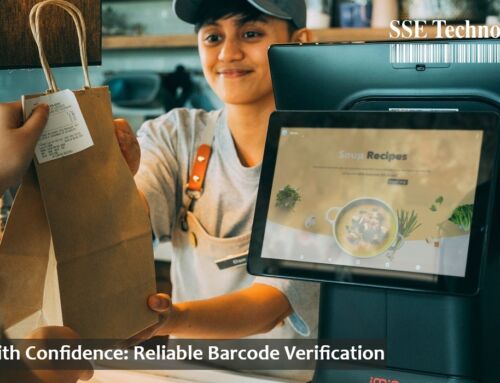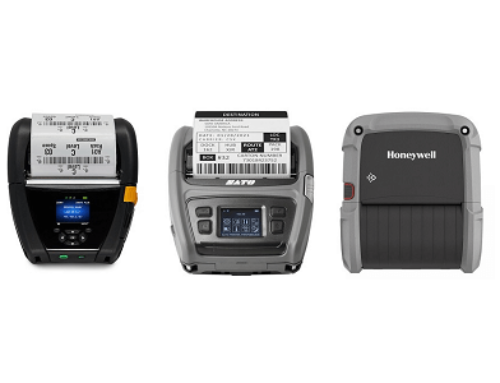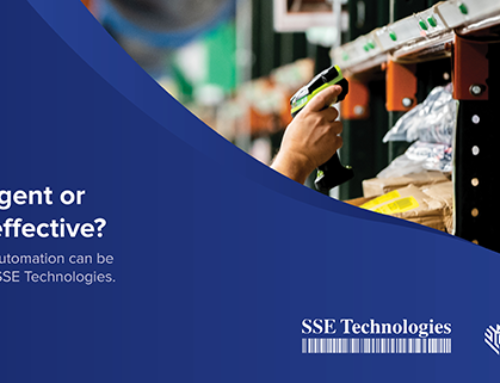WHAT IS BARCODING AND WHY IS IT USED?
- The process by which information is encoded into a barcode.
- A barcode scanner translates the code into numbers and letters that are passed on to a host system.
Why is the use of barcoding so widespread?
- Provides rapid, simple, and accurate readings, as well as data transmission for items that need to be identified, tracked or managed.
- Can be directly printed onto virtually any material.
- Most cost-effective and accurate solution for capturing data.
NOT ALL BARCODES ARE THE SAME
There is no single barcode type that has a universal business application
- Therefore, a need for different symbologies exists
Symbology:
- A symbology is a type of barcode, or a barcoding language.
- Every barcode type or symbology has a unique way of encoding data characters.
- The most common difference between symbology types is 1-Dimensional (1D) and 2-Dimensional (2D) codes.

1D VS. 2D SYMBOLOGIES
- Different barcode symbologies support different types and amounts of data.
- The type of barcode that is being used in the application environment will impact the type of scanner that is needed to read it.
1D BARCODE SYMBOLOGY EXAMPLES
| SYMBOLOGY | DATA CAPACITY |
|---|---|
| UPC-A | 12 numeric digits – 11 user specified and 1 check digit |
| UPC-E | 7 numeric digits – 6 user specified and 1 check digit |
| Code 128 | Variable length alphanumeric data |
| I 2 of 5 | Variable length numeric data |
2D BARCODE SYMBOLOGY EXAMPLES
| SYMBOLOGY | DATA CAPACITY |
|---|---|
| Data Matrix | Consists of any type of data including binary or alphanumeric and be up to 3116 bytes in length |
| Aztec | Consist of any type of data including binary or alphanumeric and be up to 3750 bytes in length |
| Maxicode | Holds up to 93 alphanumeric characters or 138 numeric digits |
| QR Code | Consist of any type of data including binary or alphanumeric and be up to 7089 bytes in length |

1D VS. 2D SYMBOLOGIES

| 1D SYMBOLOGIES | 2D SYMBOLOGIES |
|---|---|
| Encodes data horizontally along the barcode. |
Two-dimensional way of representing information. |
| Can store a limited amount of information (around 85 characters maximum but typically much less, depending on the code type). |
Can store a greater amount of information (hundreds of characters) compared to a 1D code. |
| As more data is encoded, the barcode becomes wider |
As more data is encoded, the size of the barcode can be increased in both the horizontal and vertical directions, thus maintaining a manageable shape for easy scanning. To properly decode the data, a scanner must read the entire symbol, in both dimensions. |
BARCODING DNA
- Character Sets are combinations of bars and spaces that represent a specific character.
- X-Dimension is the width of the smallest bar or space element in the barcode. Also referred to as mil size (1 mil = .001 inch).
- Quiet Zones are the areas just before and after the barcode.

ANATOMY OF A UPC BARCODE – EXAMPLE
- Number system character = specific to industry
- 0 = Grocery
- 3 = Pharmaceutical
-
- The price is not encoded in the barcode, just the ability to look it up in the host system via the Manufacturer and Product Code
- Manufacturer Code/Company Prefix – 6 to 10 digits in length and is a globally unique prefix assigned to the company. This ensures that your product’s barcode is not confused with another company’s product.
- Product Code/Item Reference –Unique code assigned to the product. Combines with the manufacturer code to make up the first 11 digits of the barcode.
- A check digit – a special formula using those first 11 digits is used to calculate the check digit. This 12th digit ensures the accuracy of the information in your barcode when it is scanned.
- The price is not encoded in the barcode, just the ability to look it up in the host system via the Manufacturer and Product Code

BARCODE ISSUES THAT MAY IMPACT SCANNING PERFORMANCE

- Spots, voids, and rough edges are common barcode defects.

- Bar width growth and loss may occur when the barcode is printed.
- Bar Width Growth happens if the ink spreads.
- Bar Width Loss happens if too little ink is applied.

- Poor print contrast occurs when there is insufficient color difference between bars and spaces.







